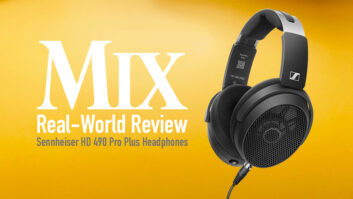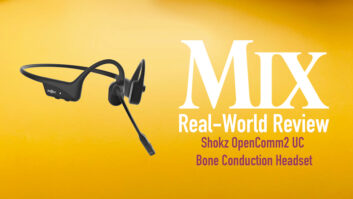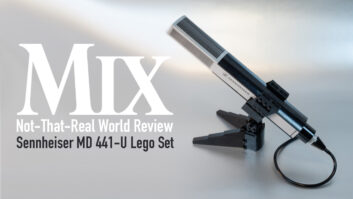I was introduced to Sennheiser’s VR recording technology at the 2017 Grammy Awards broadcast, when superstar broadcast engineer John Harris used the Sennheiser AMBEO VR 3D microphone to capture stage ambience during the show. While the technology in the mic is masterfully applied, the $2,000 price tag places that mic in a category well beyond the reach of the casual user.
Review: Sennheiser Ambeo VR Microphone, by Rob Tavaglione, July 6, 2017
Sennheiser’s more recent use of the technology in the AMBEO Smart Headset, a joint development with Apogee, is equally impressive, yet completely affordable and a perfect solution for engineers and videographers looking to record high-quality immersive binaural audio. The $300 AMBEO Smart Headset provides connectivity via an Apple Lightning connector and is compatible with iOS 10.3.1 and higher. Look for an Android version in the near future.
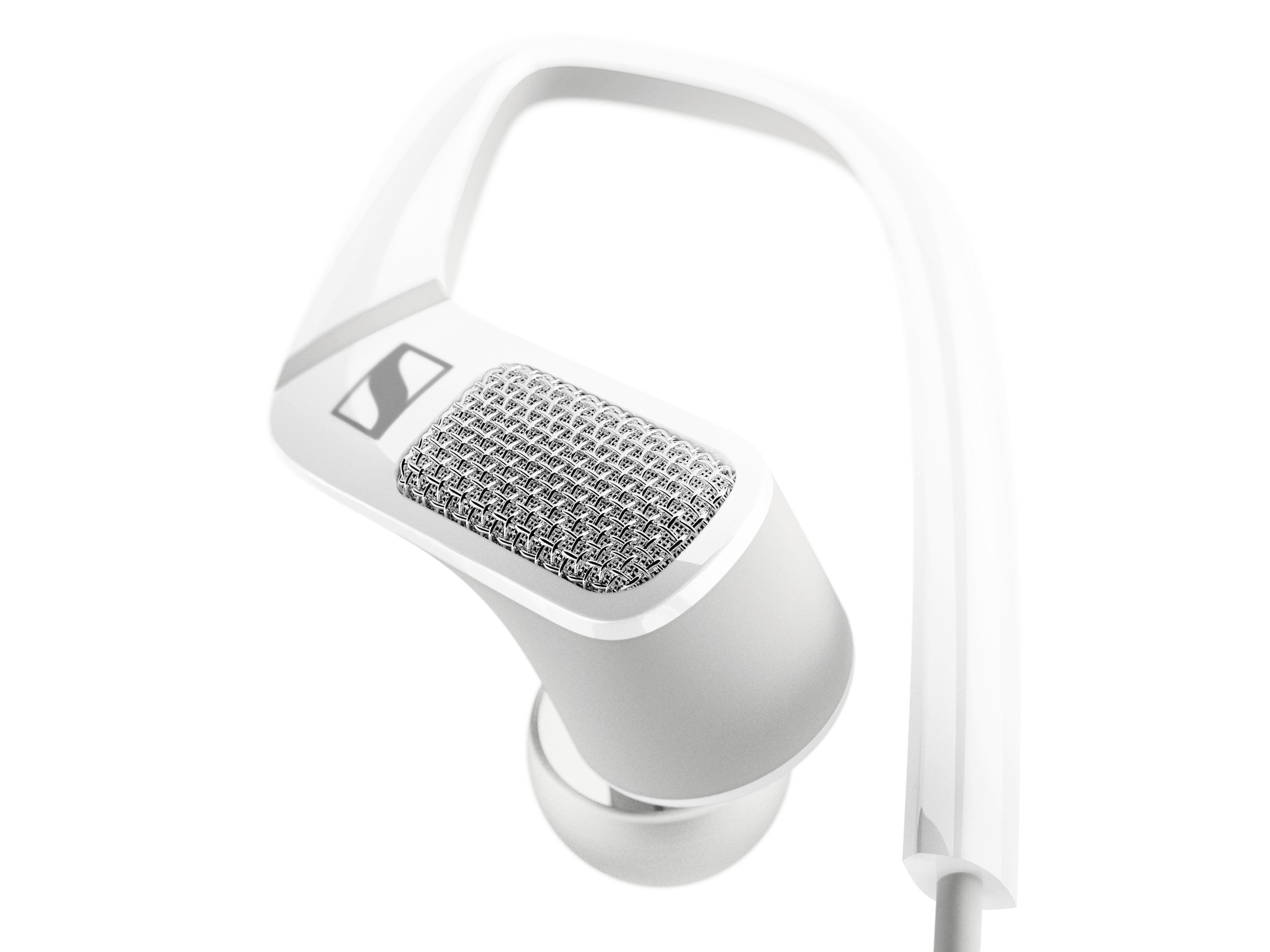
The concept of the AMBEO Smart Headset is a high-quality pair of earbuds that integrate a microphone on the exterior, allowing for easy monitoring and simultaneous picture-perfect microphone placement. The user’s head becomes the ideal binaural dummy head (and in my case, that isn’t far from the truth!). The omni-directional microphones sit behind inconspicuous silver grilles on the earpieces, whose design allows them to hook over the ears. Attached to the headphone cable is a small inline remote enclosure that contains an Apogee-designed high-quality Soft Limit-equipped A/D converter and stereo mic preamp.
The remote also gives access to the various headset controls, including the Situational Awareness slider, which allows the wearer to control how much of the outside world’s sounds are shut out via Active Noise Cancellation (ANC) or let in via Transparent Hearing (TH). TH has three presets: Reduce Level, which lowers the sound in a loud environment in a manner similar to earplugs; Natural Level; and Amplify Level, which amplifies the surrounding sound so you can hear every nuance.
Settings can be further customized via the free Smart Headset iOS app, which allows the recording level to be set (two settings: Natural or Reduced) and the playback EQ to be inserted (there are four preset EQ curves as well as a customizable curve).
The majority of the recording I’ve done with the headset has been audio only. In the time I did spend using it while recording video, I quickly realized the importance of keeping your head pointed in the same direction as the camera—which is not always the natural thing to do. Turning your head independent of the camera creates an audio track disconnected from the picture. As long as your head matches the camera, the headset captures a rich, smooth, natural binaural soundfield at a quality far superior to the device’s internal mic. At first I was disappointed that there are only two record levels, but between the level control and the Apogee Soft Limiting, I never had a problem making it work. If it’s loud (at a concert, in traffic, on an airplane, etc.) set the record volume to Reduce Level. Otherwise, set it to Natural Level. That’s all there is to it.
Apogee, Sennheiser Debut AMBEO Headset, by Strother Bullins, Dec. 7, 2017
The 24-bit, 96 kHz audio-only recordings I’ve made with the AMBEO Smart Headset are exceptional. It’s run the gamut from busking on the street to a rock band’s sound check to random street noise, and in every instance, it’s been fantastic. Anyone involved in capturing video with an iPhone for VR applications should strongly consider incorporating this headset into their workflow. Both Apogee and Sennheiser have some great examples of audio recorded with the headset on their websites.
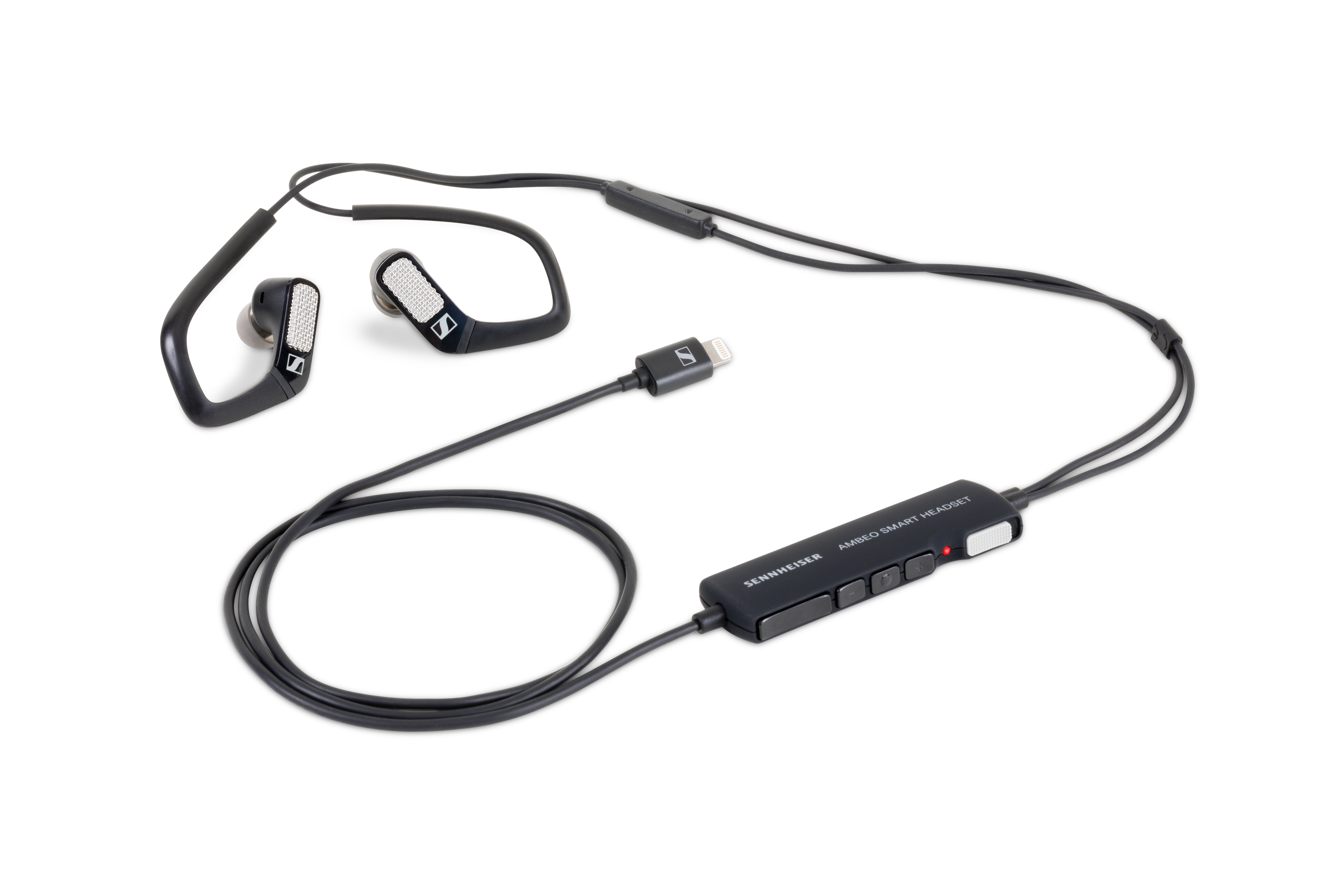
The longest I’ve recorded with the headset is approximately 45 minutes, though in that time I experienced no fatigue whatsoever, so I anticipate that having it on for two or three hours would not be a problem. From what I can tell, the headset works with any video app. I tried it with several and did not encounter problems.
Audio-only recording requires the Apogee MetaRecorder app (free, $4.99, $9.99 or $14.99 depending on features), which works flawlessly with the headset. MetaRecorder supports audio recording in the WAV or CAF format up to 24-bit, 96 kHz. Audio recorded with video is limited to 128k AAC.
The earbuds themselves are quite impressive. They offer a 15 Hz–22 kHz frequency response with 112 dB max SPL and are an ideal option for listening on the go. The headset includes three earbud sizes and a carry bag. Users wanting a bit more protection for the headset should consider the Pelican 1010 Micro Case, as it is waterproof, provides very good protection, and can be purchased on Amazon for $10.
Apogee Sennheiser AMBEO Smart Headset • www.apogeedigital.com/shop/ambeo-smart-headset
Sennheiser AMBEO Smart Headset • en.us.sennheiser.com/in-ear-headphones-3D-audio-ambeo-smart-headset
